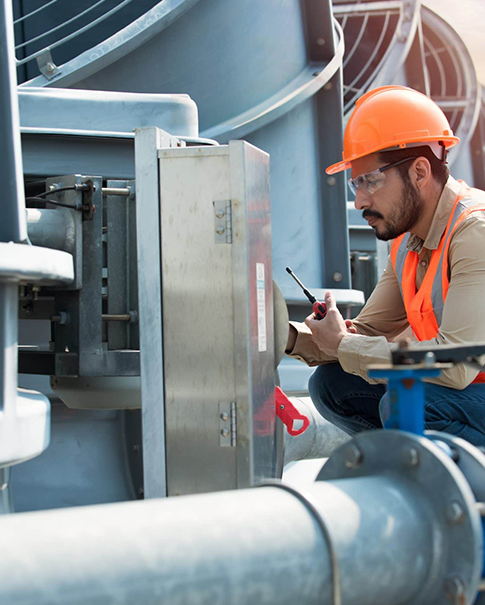How to Select a Mould Temperature Controller (MTC)?
May 23, 2025
As a leading supplier of industrial temperature control solutions, Hengde Company has always been committed to providing high - quality and high performance temperature control equipment for various industries. Among many temperature control devices, the mold temperature controller is one of our core products, which is widely used in multiple fields such as plastics, rubber, and die - casting, helping numerous enterprises to improve production efficiency and product quality. Today, let's delve into how to select a suitable mold temperature controller.
In the plastics industry, the mold temperature controller is an indispensable device, playing a crucial role in optimizing the production process and ensuring product quality. Currently, the most commonly used mold temperature controllers in the plastics industry are mainly divided into two types: water type mold temperature controllers and oil type mold temperature controllers.
Water type Mold Temperature Controllers
Water type mold temperature controllers use water as the heat medium and usually operate based on the principle of direct heating and cooling. Their common temperature ranges are three types: below 100°C (212°F), 120°C (248°F), and 180°C (356°F). Water, as a heat medium, has advantages such as low cost and no pollution, and is widely used in some production scenarios where the temperature requirements are not particularly high.
Oil type Mold Temperature Controllers
Oil type mold temperature controllers use professional industrial oil that is not easily decomposed by high temperatures as the heat medium and work based on the principle of direct heating and indirect cooling. The commonly used temperature ranges by manufacturers are generally below 180°C (356°F), 200°C (392°F), and 300°C (572°F). Oil - type mold temperature controllers can reach higher temperatures and are suitable for production processes with high temperature requirements.
Application Advantages of Mold Temperature Controllers
Accelerate the production process: By precisely controlling the mold temperature, the product molding cycle can be shortened, the production progress can be accelerated, thereby reducing production costs and minimizing the loss of production materials.
Improve product quality: Effectively reduce the proportion of unqualified products, strictly control product quality, and ensure that products meet high - quality standards.
Precise temperature control: The temperature can be controlled within the set range, so that the appearance quality of products can be strictly controlled, enhancing the aesthetics and market competitiveness of products.
Increase production efficiency: Increase the molding time of neutral products, significantly improve production efficiency, and create more economic benefits for enterprises.
Selection Suggestions
Water quality consideration: If the pH value and iron content in the water of the manufacturer's location are too high, or the water is not clean with too many impurities, it is not recommended to use a water - type mold temperature controller. Instead, an oil - type mold temperature controller should be selected to avoid equipment failures due to water quality problems.
Product characteristics: If the products produced by the manufacturer are transparent or optical mirror products, since oil mist may affect the gloss of the products, it is not recommended to use an oil - type mold temperature controller. A water - type mold temperature controller is more suitable.
Important Technical Parameters to Pay Attention to When Purchasing
Temperature control range: Refers to the maximum temperature control range that the mold temperature controller can achieve, and it needs to be selected according to the temperature requirements of the production process.
Temperature control accuracy: That is, the temperature deviation of the mold temperature controller during stable operation. The higher the accuracy, the more beneficial it is to the control of product quality.
Power supply and power data: Include the total power of the mold temperature controller, the power of the main components, the supply voltage, and frequency. These data are related to whether the equipment can operate normally under the existing power conditions of the enterprise.
Heat transfer medium: Currently, the commonly used ones are heat - conducting oil and water, and it needs to be determined according to actual production needs and the above - mentioned selection suggestions.
Cooling method: Oil - type temperature controllers use indirect cooling, and the commonly used cooling methods for water - type temperature controllers are direct cooling and indirect cooling. Different cooling methods are suitable for different production scenarios.
Heating power: That is, the maximum heating power of the mold temperature machine, which determines the heating speed of the equipment.
Circulating pump power: Involves the power specifications, size, and parameters of the pump, affecting the circulation efficiency of the heat medium.
Flow rate and pressure: It is necessary to ensure that the heat medium has sufficient flow rate and pressure to meet the heat exchange requirements and ensure the temperature control effect.
Interface size/model: Include the inlet and outlet pipe diameters of the heat medium and the cooling water pipe diameter, etc. These sizes should match the existing pipeline system of the enterprise.
With years of R & D and production experience in the field of mold temperature controllers, Hengde Company can provide you with all - round selection guidance and high quality products. Our mold temperature controllers have won the trust of numerous customers with their excellent performance, stable quality, and precise temperature control capabilities. If you have any questions during the process of choosing a mold temperature controller, please feel free to contact Hengde Company. We will wholeheartedly serve you and help make your production process more efficient and of higher quality.
Choose Hengde, Choose Perfect Mold Temperature Controller !
